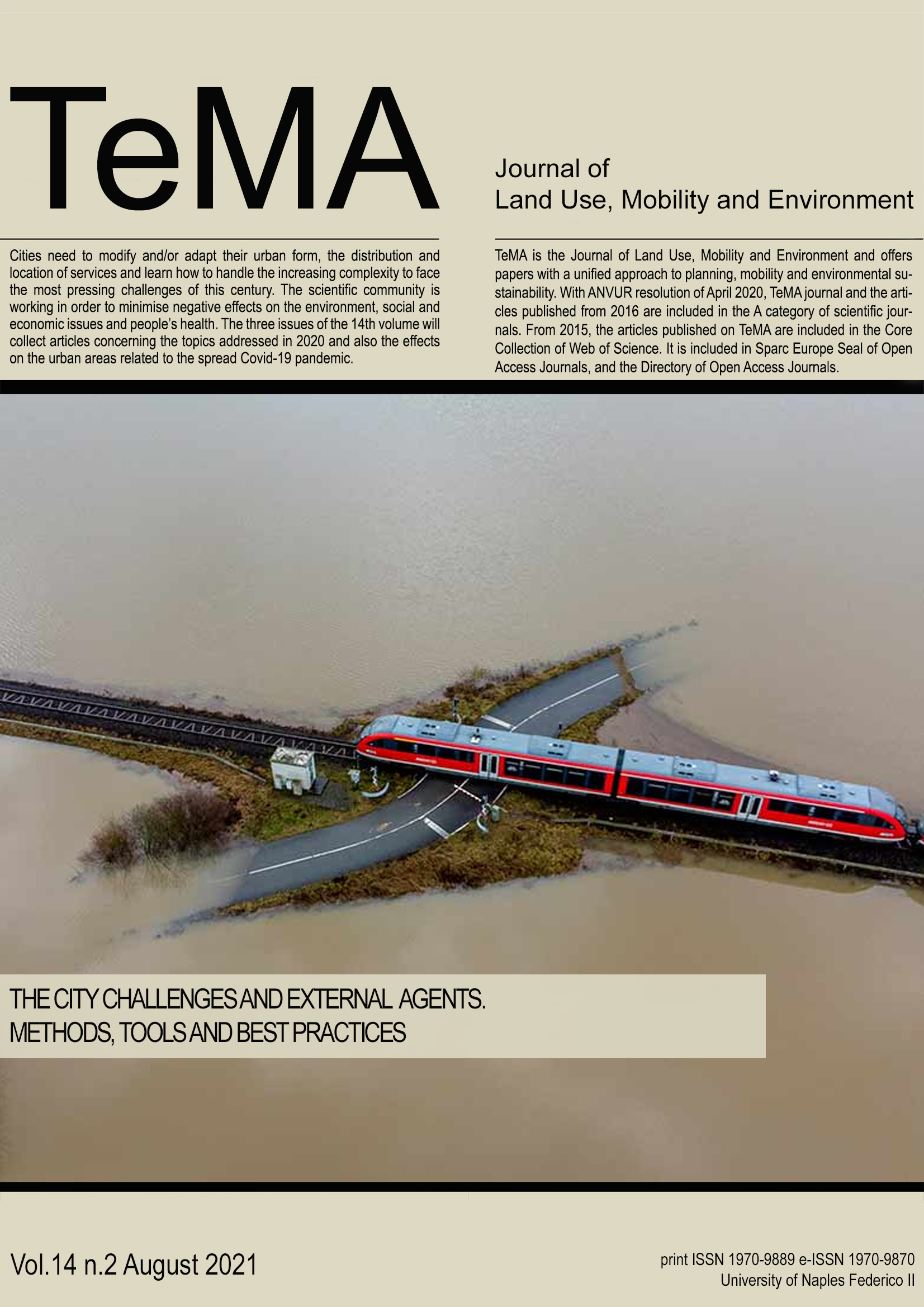Former military sites and post-Covid-19 city in Italy. May their reuse mitigate the pandemic impacts?
DOI:
https://doi.org/10.6093/1970-9870/7947Keywords:
Urban Regeneration, Urban Planning, Urban Voids, Post-Pandemic territoriesAbstract
The presence of former military settlements, along with other abandoned spaces in the Italian cities, constitutes an opportunity for developing inclusive and green cities through a good governance, especially after the 2020 pandemic outbreak. This paper develops an analytical matrix for comparing and evaluating the redevelopment projects of a number of case studies in the Italian metropolitan cities of Bologna, Milan, Rome, and Turin in the face of the challenges of the post-COVID-19 issues. Although the difficulties to evaluate still ongoing redevelopment projects, I found two main results. First, the Italian political and economic context is what most influenced the redevelopment process and not so much the intrinsic characteristics of former military sites. Second, it seems that the reuse of these urban voids will not match a couple of features of the so-called post-COVID-19 features, i.e. inclusive and good governance, though the redevelopments can seemingly develop green cities.
Downloads
Downloads
Published
How to Cite
Issue
Section
License
Authors who publish in this journal agree to the following:
1. Authors retain the rights to their work and give in to the journal the right of first publication of the work simultaneously licensed under a Creative Commons License - Attribution that allows others to share the work indicating the authorship and the initial publication in this journal.
2. Authors can adhere to other agreements of non-exclusive license for the distribution of the published version of the work (ex. To deposit it in an institutional repository or to publish it in a monography), provided to indicate that the document was first published in this journal.
3. Authors can distribute their work online (ex. In institutional repositories or in their website) prior to and during the submission process, as it can lead to productive exchanges and it can increase the quotations of the published work (See The Effect of Open Access)



